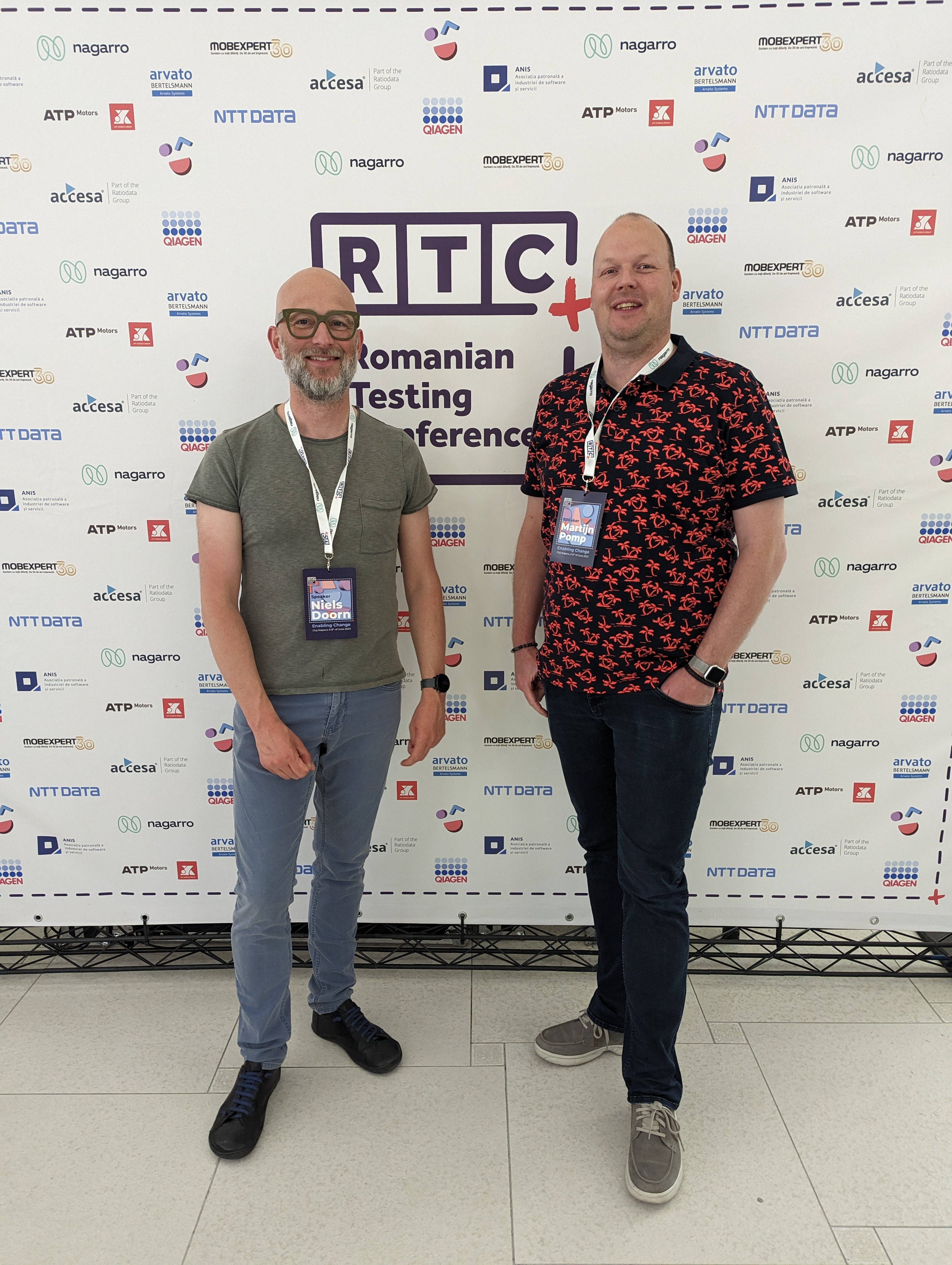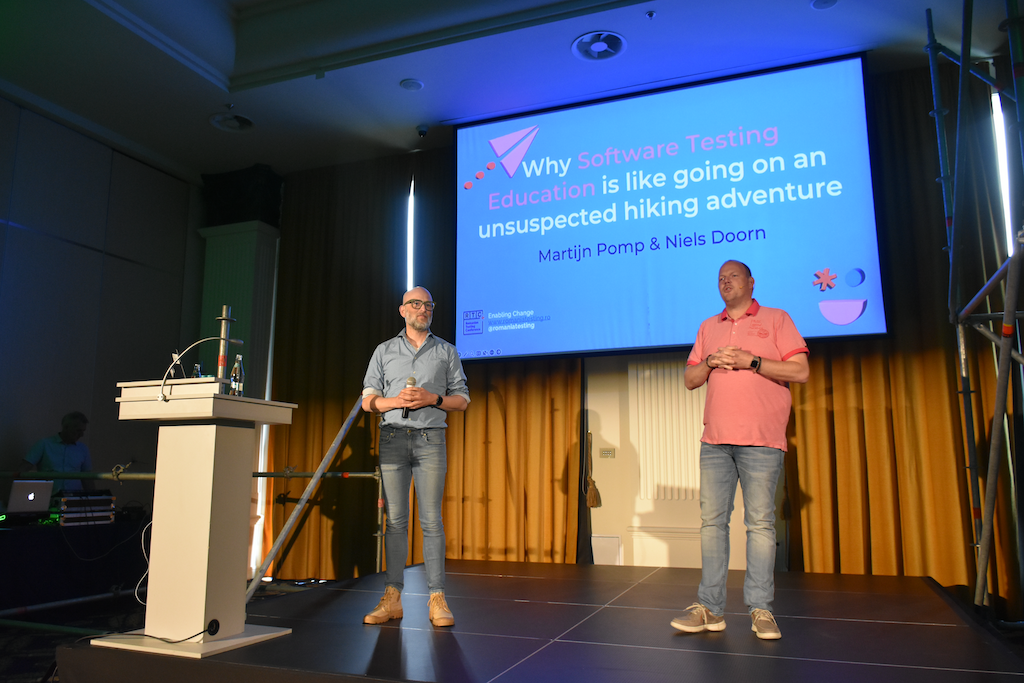Niels Doorn, Ph.D. student

My research on improving teaching and learning strategies of software testing in computer science education.
Blog
- Presenting article at ENASE 2025 in Porto
- Couple of days working on Schiermonnikoog
- Visiting the CSEE&T conference and presenting our article
- Serious Gaming Summer School Tallinn
- Poster at NWO ICT.OPEN 2024
- Presenting at INTED 2024
- Testing day 2023
- European Summer School on Science Communication
- Presentation at OURsi event
- EASE Conference and LEARNER workshop
- The Romanian Testing Conference
- Lightning talk at VERSEN SEN 23
- Presentation at RCIS 2023
- Presentation at Vakdidactiek Informatica event
- Poster at NWO ICT.OPEN 2023
- Presentation at ICST 2023
- Presentation at NIOC 2023
- Poster and presentation at ITiCSE 2022
- Working in Linz
- Summer holiday
- Switching off Twitter
- Working from a boat
Orcid
My Orcid ID is: 0000-0002-0680-4443.
Mastodon
I sometimes toot about my research on my Mastodon account @niels76@mastodon.online about my research, but more often about other things that interest me, or that fill me with wonder.
GitHub
Some of my projects can be found on GitHub.com/nielsdoorn. Feel free to contribute.
Running / sports
Follow me on Strava! I like to go for a run now and then. It helps me to think and also to clear my mind. I often get my best ideas while working out, but I also tend to forget most of them immediately.
Other interests
☕ 🧘 🌳 🐱 🐔 🥞 🚲 📷
TILE Repository
Came here for the Test Informed Learning with Examples repository? Look no further! It can be found at tile-repository.github.io/.
The Romanian Testing Conference
by Niels Doorn
RTC 2023
Last year a colleague and I went to the Romanian Testing Conference 2022 in Cluj-Napoca, Romania. It was a two-day event, with one day of tutorials and one day of conference. We really enjoyed the event, and decided to come again this year. But this year, we are more involved, because RTC accepted our proposal for a presentation! So we get to present on the conference day.

This year, it is a three-day event, with more time allocated for tutorials. We are attending two whole day tutorials on testing.
Day 1: The Exploratory Testing That Catches Bugs! – Tutorial by Peter Sabev
This tutorial was very interesting. Peter explained what exploratory testing is, what the pros and cons are, and how to do it. He presented many approaches, tour-based, persona based and De Bono’s thinking hats based approaches. It was a very hands-on tutorial, so we got to test a live production system very thoroughly using these approaches. The amount of issues we uncovered was huge.
I really liked the pair-testing way of working. One takes the role of observer and keeps a log of the testing session, and the driver does the testing. This way, both peers can focus on one thing and this reduces the need to keep on switching between testing and logging.
Day 2: Back to basics tutorial
We attended this tutorial with the idea to see how we can improve our testing education. The idea behind the tutorial was good, however, the tutorial failed to convince in some ways. The concepts explained are relevant, however the examples given are somewhat controversial, and the sheets contained some critical errors.
Day 3: Conference day!
Day three, the last day, is the conference day. In the afternoon is our presentation, before that lots of interesting talks and keynotes.
The first keynote speaker stated that testing is a form of technical leadership, which I like. He also talked about approaching testing in the same way as a doctor does a diagnosis. Something I am researching as well. His motive was that the people who pay for testing do not care about how we test, but at the result. If a doctor has a medicine, most patients want that medicine. This is different from my research perspective, but might be another reason to shift the teaching paradigm from the rational approach to the emperical approach.
The second talk is about improving the performance of end-to-end tests. Something not directly applicable for me, but interesting nonetheless.
The third presentation is about nudging. Something I really like in education and in everyday live. The ideas to apply it in testing were very nicely presented, and the underlying theory was nicely connected. All in all a very interesting presentation.
The next presentation I really liked was about becoming a nice person to work with. It was based on improv theatre, and really interactive. It was about failing, and communicating clear intents.
After that we attended a presentation about software failures that happened. It is always good to learn from mistakes others make, but it is also a good idea to keep a personal log of made mistakes to look back on in time.

Before the final keynote was our presentation. Based on the reactions during and afterwards from the audience, it was a success! We really enjoyed doing it. It was a good talk at the end of the day, when most people become overwhelmed with information. Our presentation was about the experience we had last year the day after RTC2022 when we went on a hiking adventure with a guide. During that hike we saw a lot of similarities with what we encountered during that hike and the way students learn software testing.
tags: conference - RTC - presentation